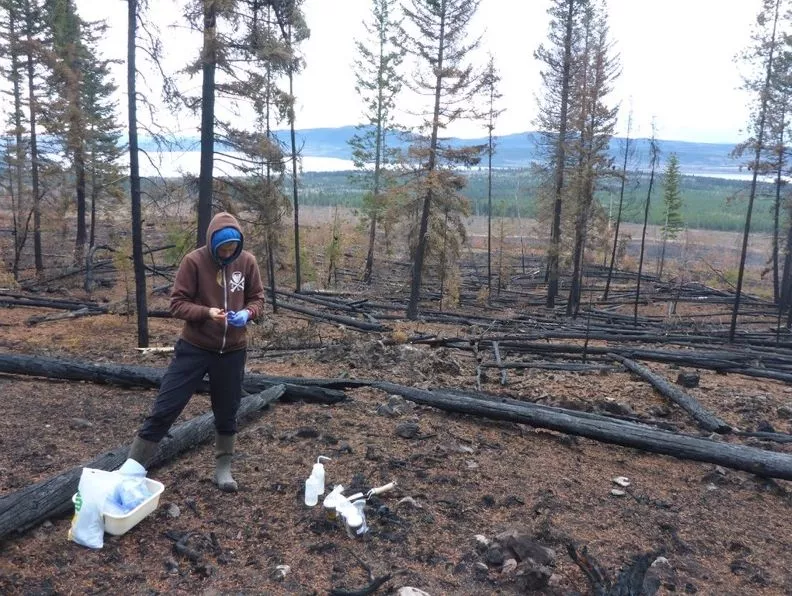
The primary goal of Theme 2 is to determine how land-falling atmospheric rivers and severe wildfires modify landscape erosion and the delivery of fine-grained sediment and associated chemicals to river channels within the Nechako River Basin (NRB). This research is vital for understanding sediment sources and transfers due to the climate crisis, providing the scientific basis necessary to protect sensitive aquatic habitats and ecosystems from the adverse impacts of sediment and its associated contaminants.
Specific objectives of Theme 2 are:
-
Role of Atmospheric Rivers: Collaborating with Theme 1, Theme 2 aims to comprehend the role of atmospheric rivers in driving sediment sources and fluxes. This will be achieved by instrumenting selected sub-watersheds in the Coast Mountains, allowing detailed analysis of how these hydrometeorological events influence sediment dynamics.
-
Wildfire Influence: Theme 2 will investigate wildfires of varying severity, characteristics, and age to determine their influence on sediment sources and the delivery of both sediment and associated contaminants to river channels. This research will provide crucial insights into post-wildfire erosion and sediment transport dynamics.
-
Assessment of Fish Spawning Habitats: The theme will identify sources of fine sediment and assess sediment quality, specifically chemical contaminants, in key fish spawning habitats along the main stem of the Nechako River. Understanding the quality and sources of sediment is vital for protecting aquatic ecosystems, particularly sensitive fish spawning areas.
-
Mitigation Measures and Guidance: Theme 2 aims to provide guidance on effective mitigation measures to control erosion and limit the delivery of fine sediment and associated chemicals to river channels within the NRB. This information will be valuable for communities and watershed managers, offering insights into appropriate measures such as seeding, mulches, barriers, and buffers, and their optimal placement within the watershed.
Additionally, Theme 2 emphasizes community engagement, particularly with First Nations. By involving these groups, the research ensures relevance to real-world landscape management practices. The data collected will be stored in a dedicated database and made accessible through the Nechako Watershed Portal in collaboration with Theme 4. This accessibility ensures that the findings and insights are available to First Nations, researchers, and other stakeholders, promoting knowledge dissemination and informed decision-making in the region.